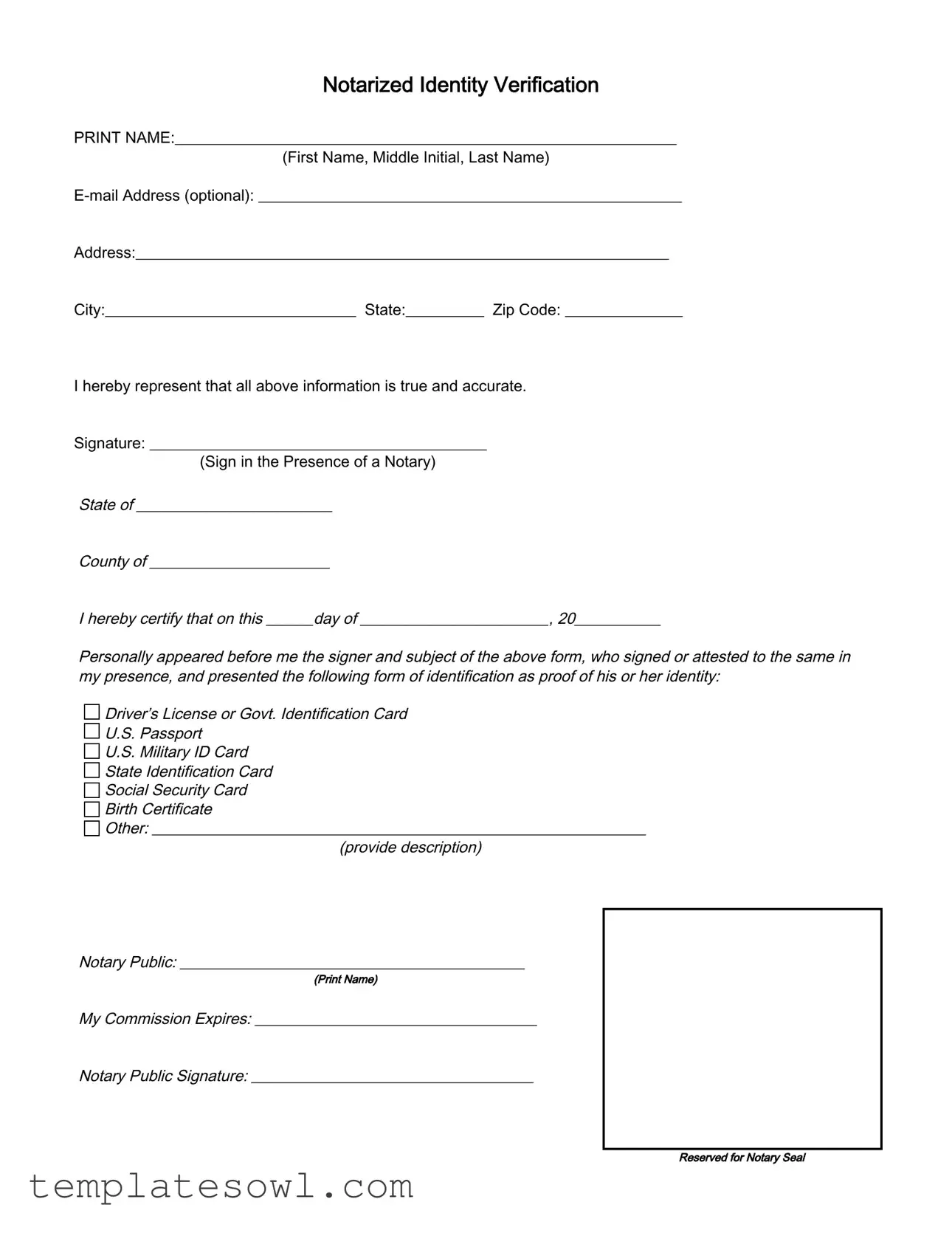What is the Notarized Identity Verification form?
The Notarized Identity Verification form is a document used to confirm an individual's identity. It requires personal information such as name, address, and email, along with a declaration of the truthfulness of the information provided. The signature of both the individual and a notary public is necessary for the document to hold legal weight.
Who needs to fill out this form?
Individuals who need to verify their identity for various purposes, such as applying for financial services, starting a new job, or engaging in legal transactions, may be required to complete this form. It serves as a reliable method for establishing identity in situations where official documentation is necessary.
How do I complete the Notarized Identity Verification form?
Begin by printing your full name, email address (if desired), and your residential address in the designated sections. Next, affirm the accuracy of the information by signing the form in front of a notary public. You must also present a valid form of identification to the notary, who will then complete their section of the form.
What types of identification are acceptable?
You can use various forms of identification to prove your identity, including a driver’s license, government-issued ID card, U.S. passport, U.S. military ID, state identification card, Social Security card, or birth certificate. If you have other forms of ID, you can provide a description of those as well.
Is email address required on the form?
No, providing your email address is optional. If you choose to include it, it may assist in any follow-up communication regarding your identity verification, but it is not a mandatory requirement to complete the form.
What is the purpose of the notary public’s signature?
The notary public's signature serves to authenticate the form. The notary confirms that they witnessed you signing the document and that you presented valid identification. This adds a layer of security and legitimacy to the identity verification process.
Do I need to make an appointment with a notary public?
Yes, it's advisable to schedule an appointment with a notary public. Notaries may have specific operating hours or may operate by appointment only. Contact a local notary ahead of time to ensure they can assist you when you arrive.
What happens once I submit the completed form?
Once you submit the completed Notarized Identity Verification form, the entity requiring the verification will review it for accuracy and completeness. Depending on their procedures, they will either process your request or reach out for additional information if needed. Ensure you keep a copy of the completed form for your records.



 Driver’s License or Govt. Identification Card
Driver’s License or Govt. Identification Card
 U.S. Passport
U.S. Passport
 U.S. Military ID Card
U.S. Military ID Card
 State Identification Card
State Identification Card
 Social Security Card
Social Security Card
 Birth Certificate
Birth Certificate
 Other: _______________________________________________________________
Other: _______________________________________________________________